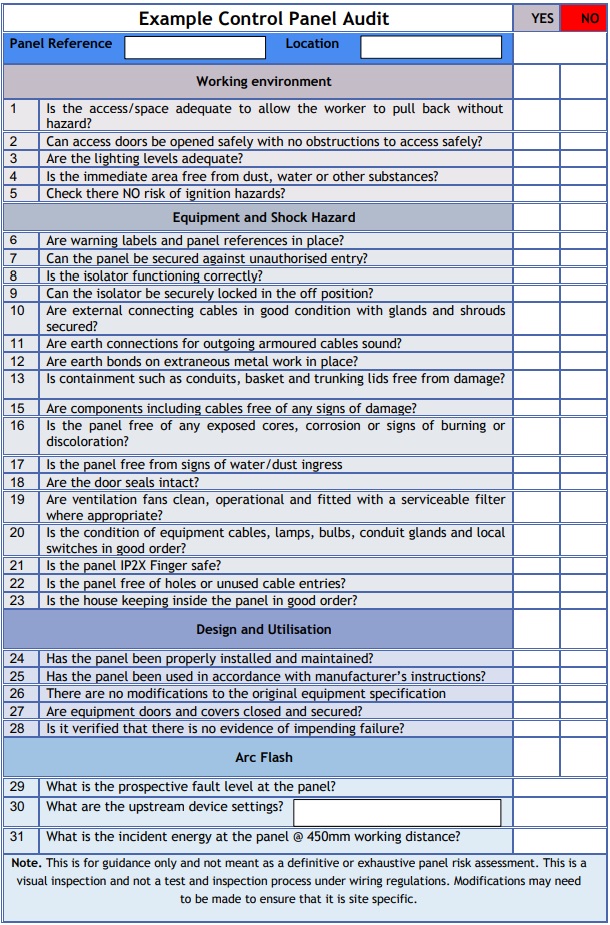The following is an example of a control panel audit form which can be used to as one part of the audit step. As discussed previously, dealing with arc flash in isolation will miss an opportunity to very effectively take stock of equipment which is likely to have the greatest number of interactions and therefore risk in terms of likelihood of electrical incidents.

9.6 Hazard Calculators
My approach throughout this chapter has been to start the arc flash risk assessment process without delay. The tools that I have provided will give the means that any competent electrical power engineer to determine the incident energy level at any piece of equipment. This is assuming that the electrical system at your facility is a traditional power distribution system comprises a high voltage point of connection or perhaps a low voltage bulk supply from a utility. In Chapter 10: Service Providers and Contractors, the section on Prediction - Incident Energy, describes a tiered approach to determining incident energy as shown in Figure 9.3 below.

Figure 9.3 Three tier calculator approach
In a generic tiered approach, circuits and associated calculators and tools are grouped as tier 1, 2 and 3. In the pyramid diagram, tier 3 circuits which are the most plentiful in most industrial and commercial facilities. As you can see, the only information that will be required is the type and size of the upstream protection and the minimum prospective fault current level. Tier 2 circuits need actual fault level only and finally, at the top of the pyramid, the actual fault level and a time current curve will be required to return an accurate prediction of arcing current and incident energy. There is also a prospective short circuit current calculator and additional tools to plot time current curves for IDMT relays and European style fuses. Chapter 14: Hazard and Severity Calculations explains all the tools in detail.
- Follow the checklists for safe procedures, safe people and safe places.
- Identify the risk gap.
- Start managing the risk straight away – Use the A.S.A.P. principle.